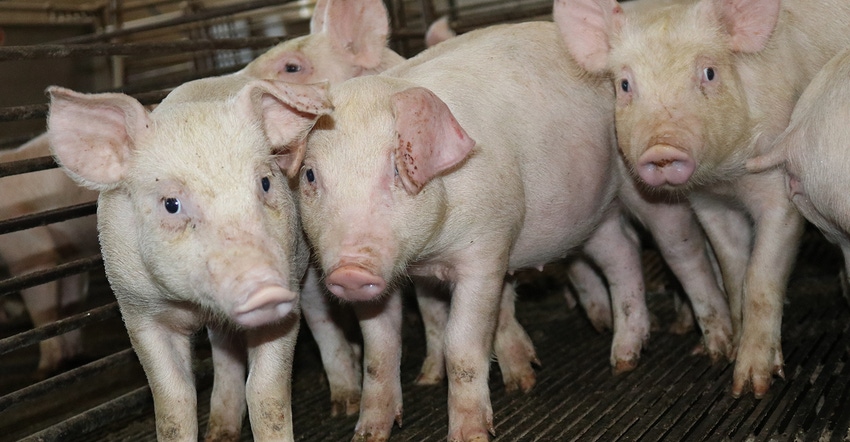Streptococcus suis: Old bug, same battle, new weapons
Further selection of the right vaccine candidates and antibiotics will further reduce the risk of losses as we continue to grow high-health pig populations.
April 28, 2020

While we all find ourselves focused on doing what we can to minimize the impact of our rapidly slowing packing infrastructure, it's important to remember we still have to fulfill our normal responsibilities toward pig health. Effective diagnosis and treatment strategies have never been more important to farm staff morale.
As such it is our duty to continue our routine health touchpoints and communication. We must strive to continue to meet the everyday needs of our "boots on the ground" farm teams. While an unprecedented amount of time will be spent managing the marketing crisis, we still must all complete our "day job" functions, keeping pig and farm staff well-being at the top of our priority list no matter which section of our supply chain they reside within.
We are learning today with the current health challenges in our country of the value of accurate and timely diagnostics. Fighting the battle of Streptococcus suis bacterial infection in pigs is no different. Current pressures to reduce the use of antibiotics and strong industry effort to develop high-health populations have led to an increase of the old bug. Farm staff are burdened with "paddlers" down in the pens and populations struggling with increased risk. Veterinarians and their diagnostics pathologists have fortunately found new weapons for this battle which appear to be bringing much needed relief.
Presentations at the recent American Association of Swine Veterinarians annual meeting support an increase of 36% in Strep. suis detection identified by bacterial cultures (Fano, et al). Research scientists have further supported this effort by building a database of whole genome sequencing to help veterinarians to group the most severe cases and select the right bug to attack (Clavijo, et al). As we have learned with these particular bacteria, there are plenty of different Streptococcus in the pigs. Finding the right Streptococcus suis bacteria which is causing the severe problem is the key to both choosing the right weapon and building the battle plan.
Historically, diagnosis of the Streptococcus bacterial infection in pigs included isolating the bacteria from fresh tissue samples, followed by a simple gram stain and bacteria observation. We know Strep is a round bacteria with a positive gram stain. We also know it should never be found on the dura of the brain. Over time, our help from the diagnostic labs led to understanding capsular types. This enemy has a nasty habit of causing severe symptoms based on the capsule around the bacteria. Having the right capsular type is critical to building the right vaccine. Pathologists have identified 35 different capsular types making the enemy much harder to pin down.
In the barn we have also created a battle fatigue among farm staff simply calling every down paddling pig a "strep pig." Veterinarians need to monitor populations with fresh tissue samples of the effected target tissue (get the brain samples) and submit multiple cases from known problem populations. When we have multiple submissions, we can identify patterns and clearly pin down the enemy with a whole genome sequence, helping us confirm we have the right bug, from the right tissue, at the right time.
All of this good information leads to the right battle plan. Organizing that plan starts with understanding the history of the population and the potential risks in the future. Producers make decisions like gilt introduction to the breeding herd, and commingling of growing pigs, which can both lead to explosive situations when the hidden enemy is allowed to take hold. Building autogenous vaccine programs and targeted antibiotic therapy have proven highly effective at limiting pig death losses when the right strep suis isolate is identified ahead of time, targeted with a plan, and killed before it gets in the blood or the brain of the pig.
Routine surveillance and review of the herd health strategy should include this new weapon to identify this old enemy. Further selection of the right vaccine candidates and antibiotics will further reduce the risk of losses as we continue to grow and enjoy high health pig populations.
Source: W.L. Hollis, who is solely responsible for the information provided, and wholly owns the information. Informa Business Media and all its subsidiaries are not responsible for any of the content contained in this information asset.
You May Also Like



